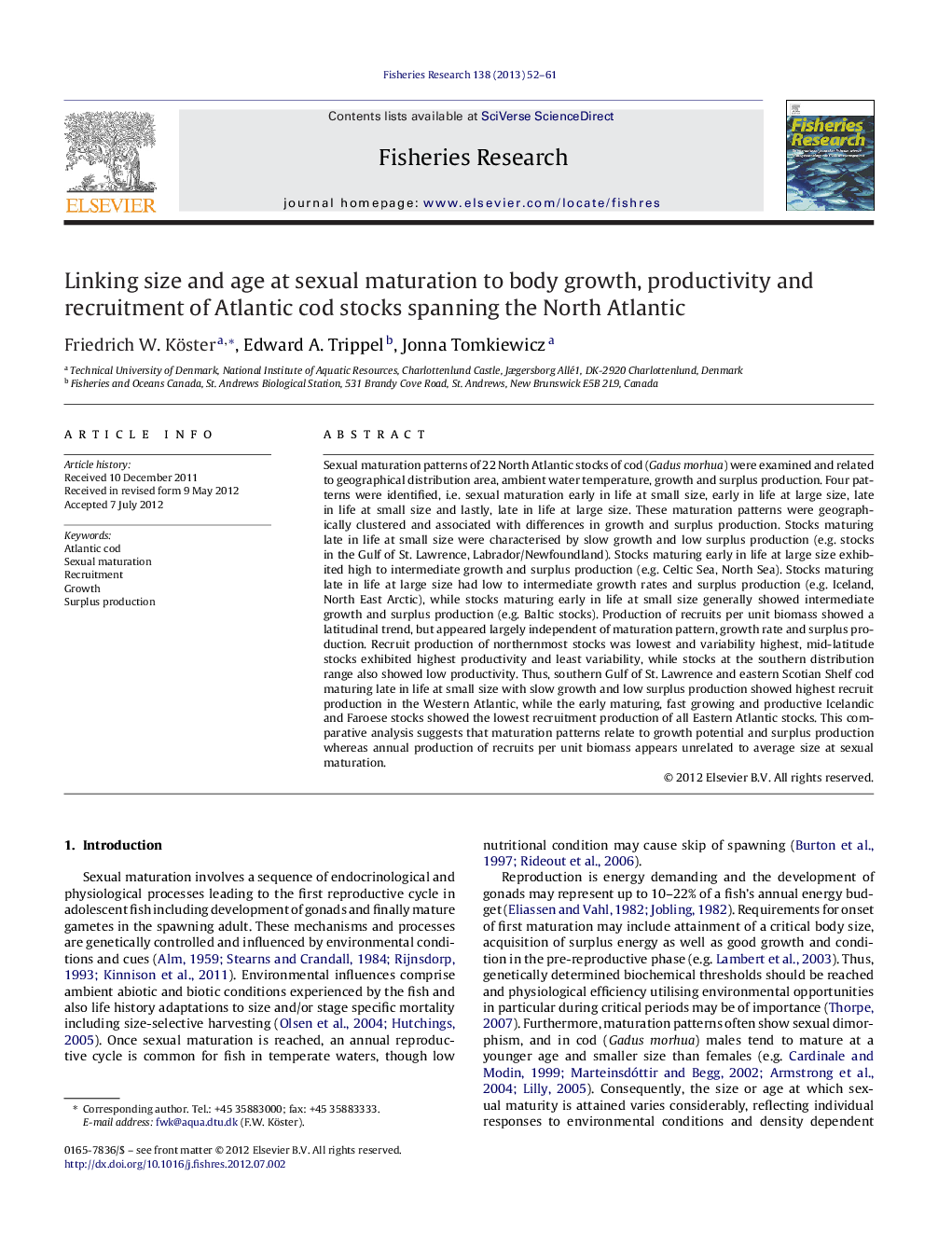| Article ID | Journal | Published Year | Pages | File Type |
|---|---|---|---|---|
| 4543218 | Fisheries Research | 2013 | 10 Pages |
Sexual maturation patterns of 22 North Atlantic stocks of cod (Gadus morhua) were examined and related to geographical distribution area, ambient water temperature, growth and surplus production. Four patterns were identified, i.e. sexual maturation early in life at small size, early in life at large size, late in life at small size and lastly, late in life at large size. These maturation patterns were geographically clustered and associated with differences in growth and surplus production. Stocks maturing late in life at small size were characterised by slow growth and low surplus production (e.g. stocks in the Gulf of St. Lawrence, Labrador/Newfoundland). Stocks maturing early in life at large size exhibited high to intermediate growth and surplus production (e.g. Celtic Sea, North Sea). Stocks maturing late in life at large size had low to intermediate growth rates and surplus production (e.g. Iceland, North East Arctic), while stocks maturing early in life at small size generally showed intermediate growth and surplus production (e.g. Baltic stocks). Production of recruits per unit biomass showed a latitudinal trend, but appeared largely independent of maturation pattern, growth rate and surplus production. Recruit production of northernmost stocks was lowest and variability highest, mid-latitude stocks exhibited highest productivity and least variability, while stocks at the southern distribution range also showed low productivity. Thus, southern Gulf of St. Lawrence and eastern Scotian Shelf cod maturing late in life at small size with slow growth and low surplus production showed highest recruit production in the Western Atlantic, while the early maturing, fast growing and productive Icelandic and Faroese stocks showed the lowest recruitment production of all Eastern Atlantic stocks. This comparative analysis suggests that maturation patterns relate to growth potential and surplus production whereas annual production of recruits per unit biomass appears unrelated to average size at sexual maturation.
